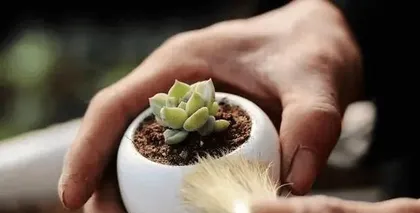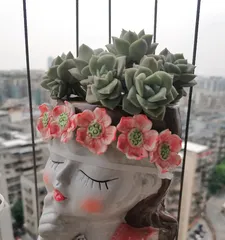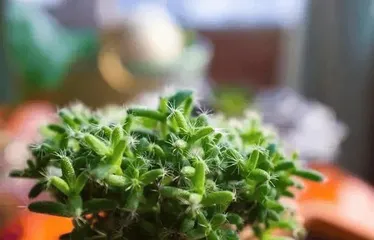Succulent plants have become one of the most popular indoor green plants in recent years. However, in the hot summer, high temperatures can easily cause succulent plants to suffer from heat stress. To protect these lovely plants, we need to take some measures to cope with the high-temperature environment and ensure they can safely survive the summer.

Choose succulent plant varieties suitable for high-temperature environments
In high-temperature environments, some drought-tolerant and high-temperature-tolerant succulent varieties, such as cacti and phoenix trees, are more suitable for growth. When buying succulent plants, it is very important to choose varieties that are suitable for the local climate.
Provide suitable light and ventilation conditions
Succulent plants need sufficient light in high temperatures, but direct exposure to the sun will accelerate water evaporation, leading to plant dehydration and death. In hot weather, we should choose an environment with moderate shade and maintain good ventilation to avoid excessive evaporation.

Reasonable watering and maintaining humidity
Under high-temperature conditions, the water evaporation rate of succulent plants accelerates, but this does not mean that frequent watering is required. The frequency and amount of watering should be judged according to the individual plant and the environment, keeping the soil moist but not waterlogged to prevent root rot.
Pay attention to reasonable fertilization and nutrient supplementation
Under high-temperature conditions, the growth rate of succulent plants accelerates, and they need more nutrients to maintain their growth vitality. You can apply fertilizers containing elements such as phosphorus and potassium in appropriate amounts, and pay attention to supplementing trace elements in a timely manner to improve the plant's ability to resist high temperatures.
Reasonably arrange watering time
Avoid watering during the high-temperature period in the afternoon. Watering should be done in the early morning or evening to avoid rapid evaporation and root scalding under high temperatures.

Avoid using cold water for watering
Using cold water for watering in high temperatures can cause a sudden change in the plant's temperature, which may cause damage. Tap water should be left for a period of time to allow its temperature to become suitable before watering.
Timely remove withered leaves and pests and diseases
High-temperature environments can easily lead to an increase in withered leaves of succulent plants. These withered leaves will affect light and ventilation and should be cleaned up in time. At the same time, pay attention to preventing and controlling common succulent plant pests and diseases to avoid further damage to the plants.
Provide suitable temperature adjustment measures
If the indoor temperature is too high, you can lower the indoor temperature by adjusting the air conditioner or using equipment such as fans to create a suitable growing environment for succulent plants.
Reasonably control humidity and shading
In a high-temperature environment, pay attention to controlling the humidity around the succulent plants and properly block direct sunlight to prevent excessive evaporation and heat scorching of the plants.
Move to a cool and ventilated place
If the outdoor temperature is too high, you can move the succulent plants to a cool and ventilated place, such as under the shade of trees in the courtyard or a well-ventilated room indoors, to avoid excessive exposure to the sun.
Gently brush the leaves of succulent plants
In hot weather, you can gently brush the leaves of succulent plants to increase air flow, which helps to lower the leaf temperature and alleviate the damage of high temperatures to the plants.
Avoid moving them drastically
In high temperatures, succulent plants are sensitive to environmental changes, and drastic movement may cause them stress and harm. It should be avoided as much as possible to frequently change their positions.
Pruning moderately
Under high-temperature conditions, succulent plants grow rapidly. Proper pruning can maintain the beautiful shape of the plant and also help to reduce the plant's nutrient consumption and water evaporation.
Maintain good air circulation
In a high-temperature environment, maintain good air circulation around the succulent plants and avoid keeping them in a closed environment for a long time to reduce the adverse effects of heat accumulation and high carbon dioxide concentration.
Reasonably arrange daily care work
In addition to the above care tips, daily care work should also be reasonably arranged, such as regularly cleaning the leaf surface, the spacing between plants, checking soil moisture, etc., to ensure the healthy growth of succulent plants.
High-temperature weather poses a certain threat to the growth and survival of succulent plants, but by taking measures such as selecting suitable varieties, providing proper light and ventilation, scientific watering and fertilization, and paying attention to daily care, we can effectively protect succulent plants, help them get through the hot summer, and continue to display their beauty and vitality.